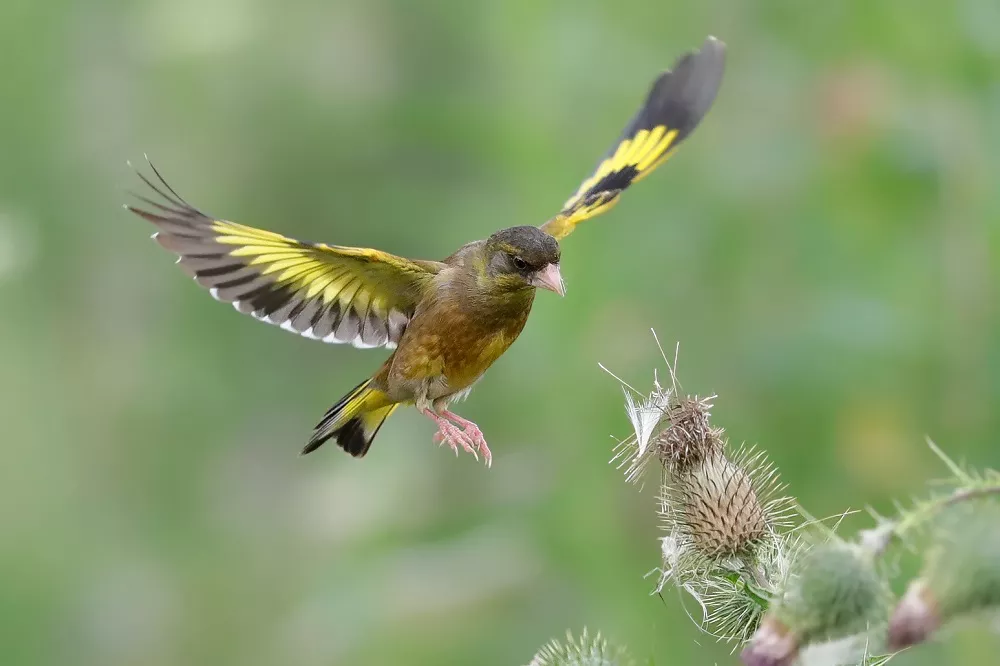Goldfinches are small birds that are widely distributed throughout North America, known for their vibrant yellow and black feathers and beautiful singing. Like many migratory birds, goldfinches undertake seasonal migrations in search of food and favorable breeding conditions. In this article, we will discuss when goldfinches migrate and what factors influence their migration.
Spring Migration of Goldfinches
In the spring, goldfinches begin their migration northward from their wintering grounds in the southern United States and Mexico. The timing of their migration can vary depending on the region, but generally occurs between March and May.
The purpose of spring migration is for goldfinches to establish breeding territories in their northern range, which extends from southern Canada to Alaska. During this time, males engage in courtship displays, singing to establish their presence and attract mates. Once pairs have formed, goldfinches begin building their nests, which are typically located in trees or shrubs.
Goldfinches are known for their slow and deliberate flight during migration, often traveling in small flocks. They are capable of covering great distances, with some birds traveling over 1,000 miles to reach their breeding grounds. As they move northward, they follow the growth of plants and the emergence of insects, which provide important food sources for them.
Factors that influence spring migration include the lengthening of daylight hours, which triggers hormonal changes that stimulate breeding behaviors. Temperature is also a key factor, as goldfinches typically arrive in areas once temperatures have warmed and plant growth has begun.
Fall Migration of Goldfinches
In the fall, goldfinches begin their southward migration from their breeding grounds to their wintering areas. This migration typically occurs between August and October, again depending on the region.
During fall migration, goldfinches form larger flocks than during the spring. This behavior allows for greater safety in numbers and provides access to larger food sources. In preparation for the journey south, goldfinches begin to store fat reserves to fuel their migration.
During their migration, goldfinches travel more quickly and with less deliberation than during the spring. They follow a southwesterly course, taking advantage of favorable winds and weather patterns.
Factors that influence fall migration include changes in day length and temperature, as well as the availability of food sources. As fall progresses, many of the plants and insects that goldfinches rely on for food begin to disappear, prompting them to begin their journey southward.
Factors Influencing Goldfinch Migration:
The timing and extent of goldfinch migration are influenced by a variety of factors, including changes in day length, temperature, and food availability. As the days become shorter in the fall, goldfinches begin to prepare for their migration by increasing their food intake and building up fat reserves. They are also influenced by weather patterns, and may delay or alter their migration in response to unfavorable weather conditions.
Goldfinches are primarily seed-eaters, and their migration patterns are closely tied to the availability of food. In the fall, goldfinches will move southward in search of food sources, such as thistle, sunflower, and other seeds. In the spring, they will move northward in search of suitable breeding grounds and food sources.
Conclusion
Goldfinches are late-season migrants that undergo seasonal migrations in search of food and favorable breeding conditions. In the spring, goldfinches begin their migration northward from their wintering grounds in the southern United States and Mexico. generally occurs between March and May. In the fall, goldfinches begin their southward migration from their breeding grounds to their wintering areas. This migration typically occurs between August and October, again depending on the region. The timing and extent of their migration are influenced by a variety of factors, including changes in day length, temperature, and food availability. Goldfinches are primarily seed-eaters, and their migration patterns are closely tied to the availability of food sources.
Related Topics:
- What do Goldfinches eat? (What You Need To Know)
- What does a Goldfinch look like?
- How long do Goldfinches live?
- What is the difference between a Yellow finch and a Goldfinch?


 Facebook
Facebook  Instagram
Instagram  Youtube
Youtube 